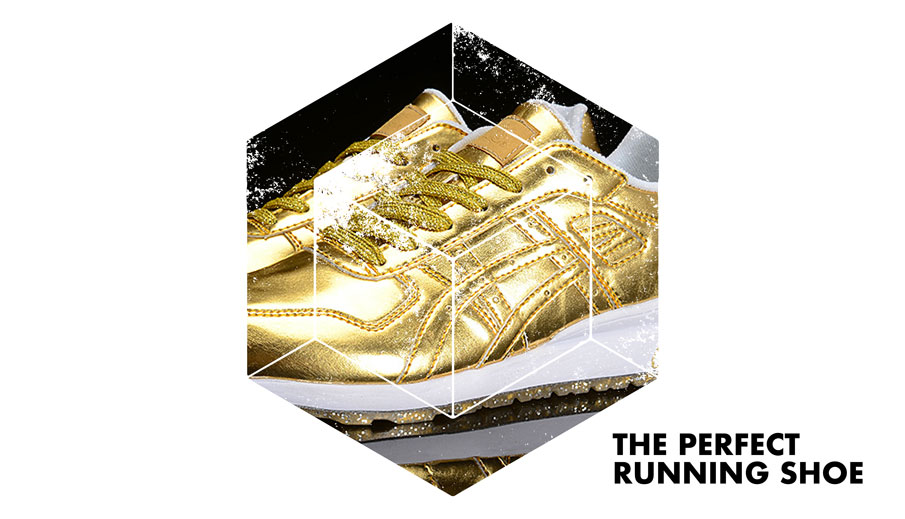
By Austin Bonds
Myth (noun): a popular belief or tradition that has grown up around something or someone; an unfounded or false notion; a person or thing having only an imaginary or unverifiable existence. See also: fable, legend, lore, running shoes. Running shoes are not the embodiment of truth? No, they are simply a myth from one year to the next. For 364 days, they provide utter joy to our tired, bedraggled feet, but on day 365, elation fades to black and giddiness yields to grouchiness. This is the staying power of the running shoe myth.
As someone who works for a specialty running shop, I’m repeatedly asked a probing question. What’s the best running shoe? I’ve yet to develop a solid, robust response to this query in five years; furthermore, I’m inclined to think that I never will. Maybe this okay, though. Maybe this is how it should be. A Google search for “perfect running shoe” reveals lists from the likes of Runner’s World, BuzzFeed, and Competitor magazine. Brands appear too, including Adidas, Asics, and Brooks. Suffice it to say that there’s no shortage of recommendations from publications and companies on which brand is best in a crowded, competitive marketplace.
Though this article is concerned with the non-existent, perfect running shoe, numerous articles on the web focus on myths surrounding running shoes. For instance, a Runner’s World article debunks five of note, and, incidentally, the first one listed echoes mine. “There is a best running shoe.” Actually – there isn’t. Consider this widespread myth: “A shoe is a prescription.” Prescriptions come from physicians, not from salesmen or saleswomen. To pigeonhole a person into one shoe or one brand based on a few questions and a brief run on the treadmill is a disservice.
Other factors are undoubtedly part of the search for a shoe. Consider these: weight, balance, flexibility, form, and speed. Injury history is a substantial consideration too. What factor reigns among these? What is the chief aim? Comfort. In the words of Jonathan Beverly, author of the aforementioned Runner’s World article, “Running shoes and runners are too diverse to be able to provide an overall ranking or ratings of shoes. The only question a shoe guide or shoe guy can help with is, ‘Would this shoe work for someone like me?’”
This is why Believe in the Run exists – to provide you with honest reviews of running shoes after many miles of testing. Moreover, we highlight the good, the bad, and the ugly. That which shines will radiate in the review, but criticism of the fit, feel (i.e. comfort), and ride will be singled out as well. Take Skechers. When I think of Skechers, I think of sunshine and skateboards. Aside from casual footwear, the company also has a line of performance running shoes helmed by accomplished Olympians Meb Keflezighi and Kara Goucher.
I’ve never owned a Skechers shoe, but I’m currently testing three right now for an upcoming review. All I can say thus far – based on the limited mileage I have put in – is wow. I’m impressed. Will I find a few critiques for each model? Certainly. Why? The perfect running shoe is a myth. I give you the Saucony Zealot, which might be my undisputed, all-time favorite, the standard by which I measure all other models. Sadly, the Zealot is now the Zealot 2, and my love for this stellar trainer has taken a nosedive. If you would like to know why, check out the review (or is it a dirge?) by Thomas, Meaghan, and myself on what changed.
Since the perfect running shoe is a myth and nothing more, I propose an alternative solution. Invest in a few pairs of shoes and rotate them on a regular basis based on the intensity and duration of the day’s run. Two are adequate, though three increases the excitement factor. One with more cushioning is ideal for longer runs; the second is suited for speedwork. Speaking of speed, I have also come across the myth that shoes will make you faster. Unfortunately, this too is a falsehood. Repeated running is what makes you faster.
If I remember correctly, the Saucony Zealot, a shoe I now lament, will update once again in June. Version three will have my full attention as I scrutinize what changed from version two. Will the revisions be to my liking, or will it also fall short of my high expectations? In summary, these minor changes to the shoe will be felt in a major way by the feet. If the Zealot 3 falls short, I will look to the Skechers as the shoes to consistently reach for daily. Until they change again (sigh).
Have something to say? Leave a Comment